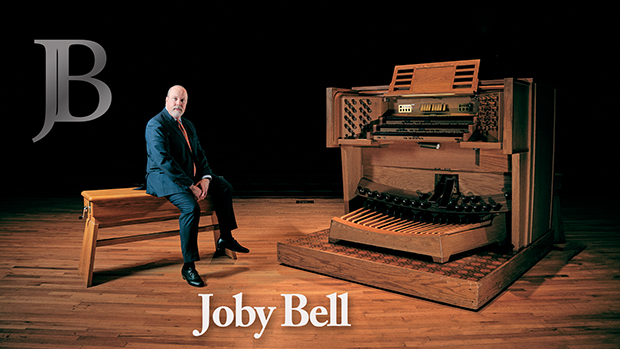Widor vs. Joby, Part 3: Symphony No. III
 Monday, June 29, 2020 at 1:03PM
Monday, June 29, 2020 at 1:03PM
This is the third installment in my series on my take on playing the complete works of Charles-Marie Widor. See the first post in the series for an introduction and my philosophies behind this blog series. And as always, refer to John Near’s edition for important corrections in the scores that I might not necessarily mention.
Symphony III is up today. Visit my program notes on the piece. And of course, feel free to order the recording.
-------------------------------
For what it’s worth, this Symphony works beautifully as a complete and rather profound Lenten series recital. (On the other hand, the last time I played it, no one applauded – I believe they saw the name ‘Widor’ in the program and were expecting the Toccata. Sorry, wrong number.)
Movement I: Prélude
Since the American Positif tends to be weak (or conversely, since the Récit and Great are often strong enough), I don't bother with the Pos-Ped coupler in this movement. I toggle the other Pedal couplers on and off quite a bit to maintain proper balance, noted below.
Widor calls for the Pedal 4-foot, but that is often too heavy against the Récit or Positif passages. Be willing to substitute something else or leave it out entirely. Couplers to the Pedal can serve as upperwork enough.
Measure 29: Widor calls for piano. Rather than subito, I choose to close the box gently during measure 28.
Measure 41: I remove the Pedal couplers to balance better against the Positif in 42.
Measure 48: I restore Réc-Ped.
Measure 53: I restore Great-Ped.
Measure 59, beat 6: I remove Réc-Ped, so that the change to the Clarinette is not heard in the Pedal and for better balance with the Positif in 62.
Measure 67: I restore the Pedal couplers (except the Positif, as explained above).
Measure 89, beat 2 or so: I remove the Great-Ped to balance.
Measure 96, beat 2: I restore the Great-Ped.
Measure 115: I remove the Great-Ped.
Measure 138, beat 2: I restore the Great-Ped.
The above is a lot of fussy changes, but in the interest of balance, it’s not too much to ask. I have never played this movement at St-Sulpice; perhaps Widor’s original indications work better there...
Movement II: Minuetto
This movement is hard! You’ll need to do your wrist flexibility exercises. :)
Watch and listen to the staccatos carefully.
The balance between the manuals will be tricky, especially at measure 54, where the feet can do nothing more about it if it’s not perfect.
Movement III: Marcia
If your audience is expecting the Toccata, tell them to look here!
You’ll need lots of general pistons to achieve smooth crescendos (53-57, 123-127) and decrescendos (72-75).
Measures 29-30 and 40-41: I hear Wagner there. Widor liked Wagner’s work, and although compelling, there is no guarantee that any similarities were deliberate.
Movement V: Final
This may or may not be important, but Widor spells this one ‘Final,’ whereas he may spell it ‘Finale’ in other works.
Measure 2: Notice that the fermata was in measure 1. Measure 2 should resume tempo, and the chord should then be released just right to propel into what follows. I wouldn’t hold the fermata any longer than it takes to close the box. If you hold it too long, it becomes its own event, which is unnecessary there.
This movement was a mature addition in a later revision, and so it is more sophisticated in its writing and expectations. Throughout this movement, take Widor at his word when it comes to rhythms. Release every note exactly where he writes it. Notice how carefully he ties notes and completes beats with eighth rests. That is tedious work, and he doesn’t go to that trouble for the fun of it. We should pay attention.
Measure 49, beat 7: I remove the Great-Ped, to keep it from droning too heavily during the Positif/Récit passage. I restore it in 51 for the Pedal melody. From there, that coupler goes on and off several times: off in 59; on in 64; off in 125; on in 133, last beat; off in 150, beat 7.
Measure 151: I remove the Réc-Ped in preparation for the piano ahead.
In the States, chances are good that the Positif [Choir] is too weak to hold its own with a melody against the Récit. Therefore, I will play the left hand on the (perhaps reduced) Great in measures 169-171, 173-175. At 177, place the left hand where it sounds best to you. It does not have any melodic interest there, but you may need it to remain where it was before, in order to hear clean rhythm on those descending notes.
Measure 181: This coda is one of those gut-wrenching moments that will stay with you; it is transcendent music. You may want to experiment with a reduced Récit there. Sometimes full Swell reeds and mixtures are just too much for the solemnity of this coda. I remove the mixture and the 2-foot and any 4-foot reeds. That leaves the 16-, 8-, and 4-foot fluework, the Trumpet, and the Oboe. Depending on voicing, I may remove one of those reeds.
 Joby Bell | tagged
Joby Bell | tagged  Note by note,
Note by note,  Widor vs. Joby
Widor vs. Joby 